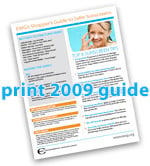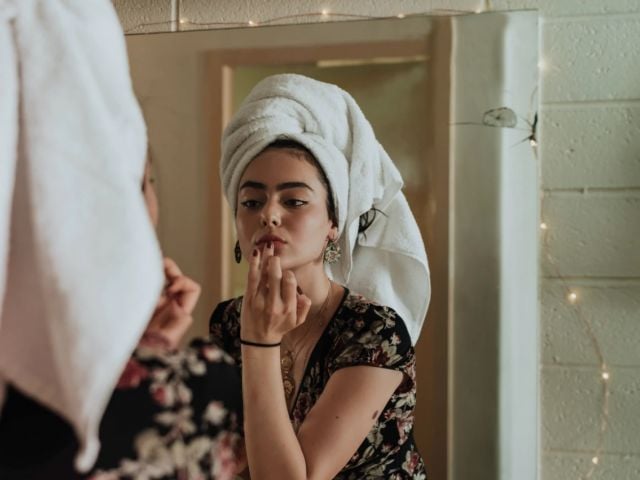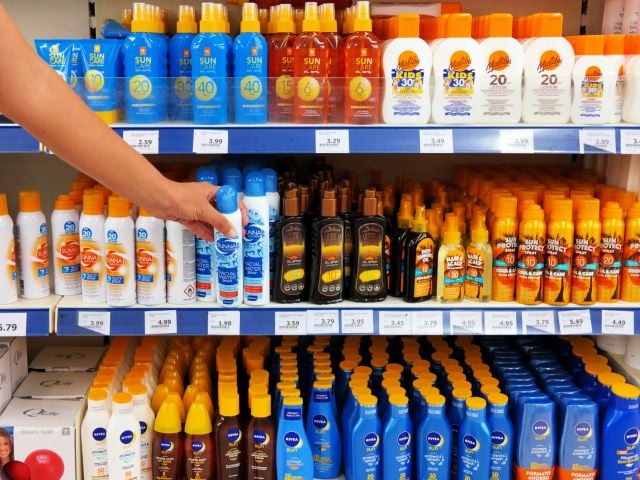By Lisa Frack with Dave Andrews, EWG Senior Scientist
By this point in the summer you've probably thoroughly researched and hunted down just the sunscreen you want. If you haven't, quick, it's already August! Read our sunscreen report and use our search widget to find a safe, effective choice for your family.
Whichever sunscreen you choose, don't blow it and get burned now by applying too little. A thin layer of sunscreen just won't protect you. Why not? Because the protection promised on the label is based on a certain thickness on the skin, and if you're skimping (we know, those tubes add up), then you're not going to get the protection you want - or paid for. How will you know if you're wearing enough? Since achieving the recommended thickness of 2 mg/cm^2 (yeah, right) isn't something you can easily estimate, let's talk in terms we can all understand: if you haven't yet bought a 2nd or 3rd bottle of sunscreen yet this summer, you're probably under applying.
Most Americans, even us EWG staffers, don't apply enough sunscreen. In fact, a study of 124 students found that the median thickness of applied sunscreen (yes, they test this stuff) was only 20% of the thickness used for testing a product's UV protection. If you're going to the trouble of picking the safest sunscreens, you should also use enough to benefit from the protection they offer.
Apply generously so it works If you're now thinking that you can just buy SPF 60 and get SPF 30 protection because you're underapplying by about 1/2, think again. It's not quite that simple. A study of 20 volunteers found that the SPF actually varies exponentially with thickness. So in our example, if you apply half the recommended amount of an SPF 50 sunscreen you might only be getting SPF 7 protection. Not so effective. Especially since The American Cancer Society recommends at least SPF 15.
Higher SPFs will give you more protection, but once you reach SPF 30, there isn't a huge difference between products with higher SPF values. A SPF 50 product, for example, only blocks about 1.3% more UVB radiation than a SPF 30 product. More important than seeking out ultra-high SPF products is simply that you apply your sunscreen generously -- most people put on only a quarter to two-thirds enough sunscreen to actually reach the product's SPF rating.
What SPF really means SPF, or Sun Protection Factor, is a measurement of how well a sunscreen will protect skin from UVB (not UVA) rays, the kind of radiation that causes sunburn. For example, if your skin would normally burn after 10 minutes in the sun, wearing an SPF 15 sunscreen would theoretically allow you to stay in the sun for 150 minutes (10 x 15) without burning. This is a rough estimate, though, and your own skin, the type of activity you do in the sun (i.e. one involving water or sweat), and the intensity of sunlight may give you more or less safety. Measuring it out to apply enough So when you're standing in your bathing suit, holding that new safe, effective bottle of sunscreen, we suggest you think about it this way: 1 shot glass of sunscreen should give you an adequate layer to cover your body. We can break it down into individual body parts by thinking about bottle caps as a standard unit of measure. Why not? You'll need:
- ½ cap for your face and neck
- 1 cap for each arm
- 2 caps for each leg
- 2 caps for you back
- 2 caps for your torso front
Most sunscreen tubes are 3-5 ounces and the large ones are 8. While the shot glass and bottle cap methods of measuring sunscreen make sense to most of us, the simplest method is to just make sure that you're going through tubes (and tubes) of sunscreen when you're in the sun a lot. For just one person it should be easy to use a tube in just two trips to the beach.
Learn more next week. Next Monday, August 10th we tackle UVA rays and how to protect yourself from them. And we invite you to join our sunscreen live chat Wednesday, August 12th @ 2 PM eastern. Bring your burning questions for EWG senior analyst Sonya Lunder. Stay tuned to Enviroblog for details.




